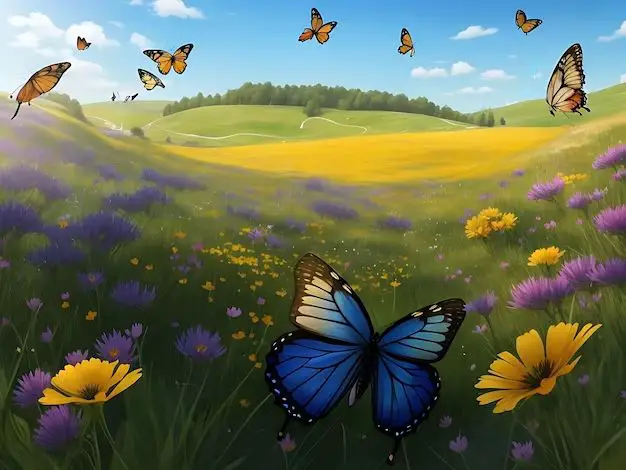Butterflies are beautiful and gentle creatures that many people enjoy seeing in nature. It can be tempting to want a butterfly to land on you, as this seems like it would provide a magical experience. However, there are a few things to consider before allowing a butterfly to land on you. Here is an overview of the pros and cons of letting a butterfly land on you.
Pros of Letting a Butterfly Land on You
There are some benefits to allowing a butterfly to land on you:
- It creates a special moment. Having a butterfly gently land on your hand or arm and sit with its wings opened creates a beautiful and peaceful scene that can make you feel connected with nature.
- You get to admire it up close. By having a butterfly land on you, you get to appreciate all of its intricate designs and patterns up close, which is often hard to do when butterflies are fluttering around.
- It shows the butterfly is comfortable with you. When a butterfly is willing to land on a human, it suggests the butterfly feels safe and unthreatened. This can create a feeling of harmony between humans and nature.
If getting close and personal with beautiful winged insects appeals to you, having a butterfly land on you can provide a magical experience.
Cons of Letting a Butterfly Land on You
However, there are also some downsides to be aware of if you allow a butterfly to land on you:
- You may hurt the butterfly. Butterflies are very delicate creatures. Even the oils on human skin or a light accidental touch can damage their wings and body. This can injure or even kill the butterfly.
- You stress the butterfly. Having a large human looming over them is stressful for these small insects. Allowing it to land on you may cause it unnecessary stress.
- You remove the butterfly from its natural activities. When a butterfly lands, it is usually to rest and feed on flower nectar. By having it land on you, you disrupt its natural behaviors and feeding.
- You risk spreading disease. Butterflies can carry diseases. By handling one, you risk spreading diseases between yourself and other butterflies.
- It’s illegal in some areas. Some places have laws against handling monarch and other butterflies, as they are considered wildlife.
So allowing a butterfly to make contact puts the butterfly at risk and disrupts its natural behaviors. This is important to keep in mind.
Tips for Safely Viewing Butterflies Up Close
If you want to get close to butterflies without handling them, there are some better options:
- Visit a butterfly garden. Many botanic gardens have special butterfly gardens full of plants that attract butterflies. Here, you can closely watch them feed and rest in their natural habitat.
- Sit still near flowers. You can sit quietly near blossoms and wait for butterflies to come close enough for good viewing.
- Use binoculars or zoom lens. Getting a close up look with optical equipment allows you to admire them without contact.
- Take photos. You can get wonderfully close photos of butterflies feeding without touching them.
Using these hands-off methods allows you to safely get close looks at butterflies without disturbing them.
Risks of Different Butterfly Species
Not all butterflies carry the same risks when handled. Here is an overview of risks of common butterfly species:
| Butterfly Species | Disease Risks | Delicacy Risk |
|---|---|---|
| Monarch | Low | High – very fragile wings |
| Swallowtail | Low | Moderate – large wings fragile |
| Painted Lady | Low | Low – sturdy wings |
| Buckeye | Moderate – potential tapeworms | Moderate – medium wing fragility |
| Viceroy | Low | High – very fragile wings |
As you can see, risks vary between species. Monarchs and Viceroys are especially prone to wing damage from handling. And Buckeyes may expose you to parasites. Knowing the species can help you assess if contact poses any special risks.
Conclusion
Butterflies are wondrous creatures that deserve gentle treatment. While having one land on you may seem like a magical experience, the risks it poses to the butterfly makes this an unwise choice. You can still safely admire butterflies up close through alternative methods like visiting butterfly gardens. But be sure to enjoy them with your eyes only, not your hands. The best interactions allow you to appreciate the beauty of nature without disturbing it.
Butterflies play key pollination roles in the ecosystem and have short lifespans to fulfill. By simply observing their beauty respectfully and allowing them to move freely, you enable them to live their vital life cycles uninterrupted. So if a butterfly lands near you, appreciate the moment as it flits off again into nature. With careful outdoor enjoyment, we can value wildlife while still protecting it.


